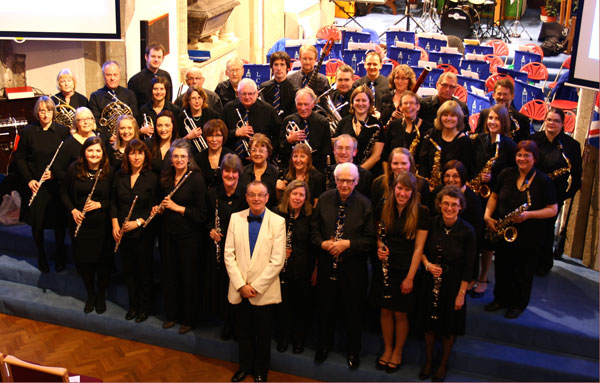News
For details of forthcoming concerts, please also see our concert listingsObservations on the Oboe.
The regular oboe first appeared in the mid-17th century, when it was called a hautbois. This name was also used for its predecessor, the shawm, from which the basic form of the hautbois was derived. Major differences between the two instruments include the division of the hautbois into three sections, or joints (which allowed for more precise manufacture), and the elimination of the pirouette, the wooden ledge below the reed which allowed players to rest their lips.
The exact date and place of origin of the hautbois are obscure, as are the individuals who were responsible. Circumstantial evidence, such as the statement by the flautist composer Michel de la Barre in his Memoire, points to members of the Philidor (Filidor) and Hotteterre families. The instrument may in fact have had multiple inventors. The hautbois quickly spread throughout Europe, including Great Britain, where it was called "hautboy", "hoboy", "hautboit", "howboye", and similar variants of the French name. It was the main melody instrument in early military bands, until it was succeeded by the clarinet.
The standard Baroque oboe is generally made of boxwood and has three keys: a "great" key and two side keys (the side key is often doubled to facilitate use of either the right or left hand on the bottom holes). In order to produce higher pitches, the player has to "overblow", or increase the air stream to reach the next harmonic. Notable oboe-makers of the period are the Germans Jacob Denner and J.H. Eichentopf, and the English Thomas Stanesby (died 1734) and his son Thomas Jr (died 1754). The range for the Baroque oboe comfortably extends from C4 to D6. With the resurgence of interest in early music in the mid 20th century, a few makers began producing copies to specifications taken from surviving historical instruments.
Classical
The Classical period brought a regular oboe whose bore was gradually narrowed, and the instrument became outfitted with several keys, among them were those for the notes D♯, F, and G♯. A key similar to the modern octave key was also added called the "slur key", though it was at first used more like the "flick" keys on the modern German bassoon. Only later did French instrument makers redesign the octave key to be used in the manner of the modern key (i.e. held open for the upper register, closed for the lower). The narrower bore allows the higher notes to be more easily played, and composers began to more often utilize the oboe's upper register in their works. Because of this, the oboe's tessitura in the Classical era was somewhat broader than that found in Baroque works. The range for the Classical oboe extends from C4 to F6 (using the scientific pitch notation system), though some German and Austrian oboes are capable of playing one half-step lower. Classical-era composers who wrote concertos for oboe include Mozart, Haydn, Beethoven and numerous other composers including Johann Christian Bach, Johann Christian Fischer, Jan Antonín Koželuh, and Ludwig August Lebrun. Many solos exist for the regular oboe in chamber, symphonic, and operatic compositions from the Classical era.
The modern standard oboe is most commonly made from grenadilla, also known as African blackwood, though some manufacturers also make oboes out of other members of the genus Dalbergia, which includes cocobolo, rosewood, and violetwood (also known as kingwood). Ebony has also been used. Student model oboes are often made from plastic resin, to avoid instrument cracking to which wood instruments are prone, but also to make the instrument more economical.
The oboe has an extremely narrow conical bore. It is played with a double reed consisting of two thin blades of cane tied together on a small-diameter metal tube (staple) which is inserted into the reed socket at the top of the instrument.
A modern oboe with the "full conservatoire" or Gillet key system has 45 pieces of keywork, with the possible additions of a third octave key and alternate (left little finger) F- or C-key. The keys are usually made of nickel silver, and are silver- or occasionally gold-plated. Besides the full conservatoire system, oboes are also made using the British thumbplate system. Most have "semi-automatic" octave keys, in which the second-octave action closes the first, and some have a fully automatic octave key system, as used on saxophones. Some full-conservatory oboes have finger holes covered with rings rather than plates ("open-holed"), and most of the professional models have at least the right-hand third key open-holed. Professional oboes used in the UK and Iceland frequently feature conservatoire system combined with a thumb plate. Releasing the thumb plate has the same effect as pressing down the right-hand index-finger key. This produces alternate options which eliminate the necessity for most of the common cross-intervals (intervals where two or more keys need to be released and pressed down simultaneously), but cross intervals are much more difficult to execute in such a way that the sound remains clear and continuous throughout the frequency change (a quality also called legato and often called-for in the oboe repertoire).

LCB at St Botolph's Church, Shepshed
